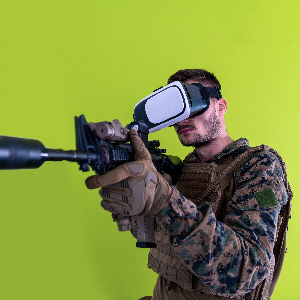Growing need for Integrated Military Simulation and Virtual Training
Amsterdam, NL - October 07, 2022 -
Virtual training has rapidly increased the training frequency by many folds. Now, defence personnel and medics can take as many training sessions as they need to improve their skill sets. The costs are pretty low, and the availability of weapons, equipment and place is no issue now.
There are two distinctive developments for next-generation military training. First is the US synthetic training environments (STE) and distributed mission training (DMT) practices. And second is NATO’s ambitious initiative of cloud-based Modelling and Simulation as a Service (MsaaS). These two initiatives have changed the entire paradigm of military training.
In coming years the use of simulators and virtual training in the military will see growing globally. The modern training equipment will be realistic yet cost effective and these will be using advanced technologies in AR/VR, artificial intelligence, data analytics and programming. There will be certain hardware upgradations and use of high-end graphic cards, advanced displays and software-defined storages will be seen increasing.
The market intelligence study from Market Forecast " Military simulation and Virtual Training - Market and Technology Forecast to 2030" will uncover clandestine strategies of leading military forces regarding military simulation and virtual training. The study uncovers procurement plans for Military Simulation and Virtual Training systems of leading military forces worldwide.
Furthermore, the study provides the dynamics of the simulators and graphic design software business and the challenges faced by the manufacturers in implementing high-end graphics in old simulation systems. The need for interoperable, single environment, modular and point of need based simulation and virtual training systems architecture are discussed.
Related Studies
